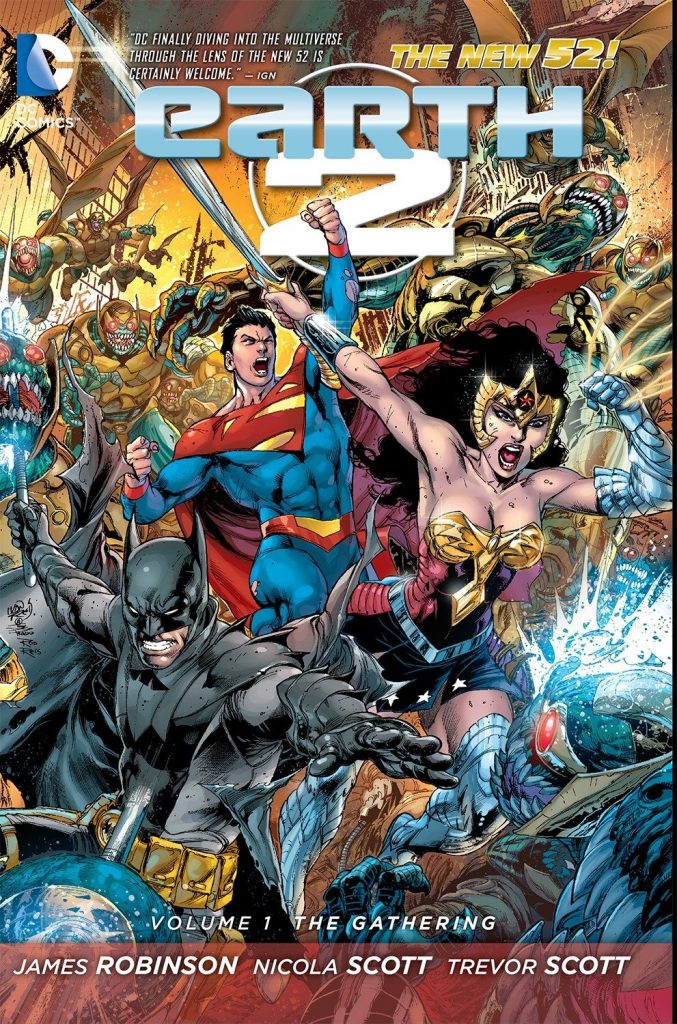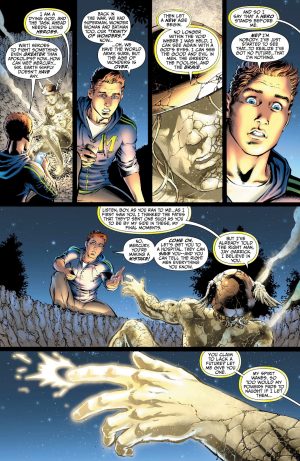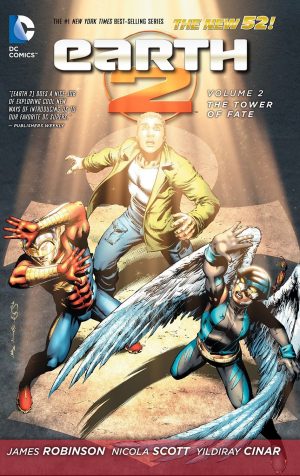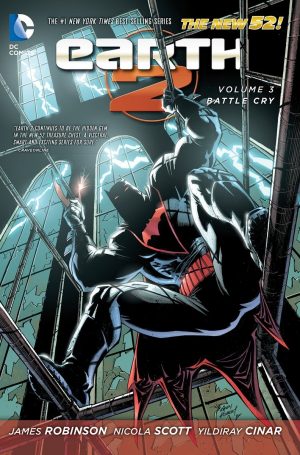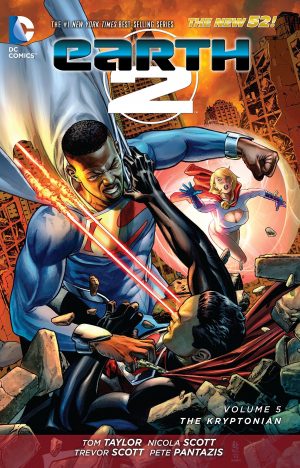Review by Ian Keogh
Spoilers in review
When DC reintroduced the concept of multiple Earths in 2011 it opened the door again for alternate histories, places where DC heroes operated, but not those we knew. Earth 2’s major difference is that there is no Batman, Superman or Wonder Woman, as shown in the opening chapter. It also explains the lack of Robin and Supergirl (see Worlds’ Finest), and the cost of defeating a Parademon invasion from Apokalips. It turns out there weren’t any other superheroes.
After that prologue James Robinson jumps forward five years and sets about introducing new superheroes. For fans with long enough memories, Earth Two had traditionally been the assigned home of DC’s 1940s superheroes, to differentiate them from their then more modern counterparts introduced in the 1950s and 1960s. Robinson, cleverly, just makes his new heroes younger, updated versions of that 1940s generation, but alters the circumstances of their origins while still producing roughly the same characters. As seen on the sample art, just after leaving college the recently jilted Jay Garrick becomes the Flash, while broadcasting executive Alan Scott endures a tragedy to channel the power of the Earth itself. Both are warned against trusting people and that their Earth faces an impending danger even greater than an invasion from Apokalips. Hawkgirl is more of a mystery, and all the way through Robinson provides glimpses of other people with names or personalities some readers may find familiar.
Those hints aren’t just verbal. Presumably at Robinson’s behest Nicola Scott peppers the art with small visual references, possibly indications of what’s to come, possibly just Easter Eggs. She’s not quite the phenomenal artist she’d be a few years later, but is very, very good, and puts in an astonishing amount of work in creating full scenes viewed from a distance, heavily populated and with a lot going on. It more than balances a few wonky figures. Because colour is important to the story, a sympathetic touch from Alex Sinclair is needed, and his juxtaposition of green and grey creates an effective combination for an important scene.
The Gathering is a clever story, one that reads well enough for anyone completely unaware of any DC history, but constantly throws in references for those who do. Flash’s origin here being a variation on Hal Jordan acquiring Green Lantern’s powers is just one example. Contrasting the arrival of the superheroes is the military mindset. Robinson steps away from what’s now the cliché of a manifestly overzealous US military only able to consider destruction by applying the same mindset to a global organisation. They’re something Robinson’s introduced to be played with over the long term, as is the vague threat, but over The Gathering he supplies the old refurbished for new intent, smartly and entertainingly runs them through their paces and leaves plenty of room for further exploration. That begins in The Tower of Fate.
